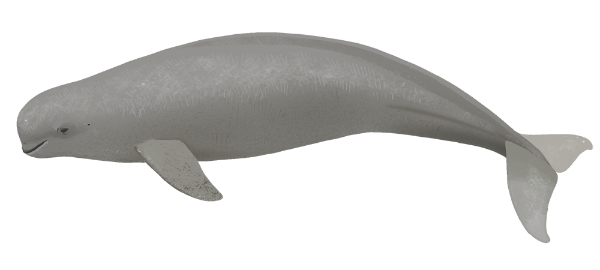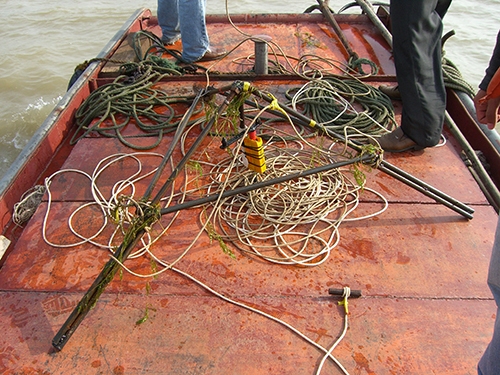Ocean Newsletter
No.566 March 5, 2024
-
Expectations for Gender Equality in the Maritime Community
KUBOKAWA Kaoru (Visiting Professor, ACRO, Teikyo University)
Achieving gender equality is also a major goal of the SDGs. The era of zero women in Japan's maritime sector is now a thing of the past, but still many challenges remain. A book entitled "Toward Gender Equality on the Sea" will be published this spring. The book discusses the proposals and expectations necessary for the development of the maritime sector in a sustainable society based on gender diversity. Here, I would like to provide an overview of the book.
-
Tracking the Finless Porpoise Through Sound
KIMURA Soen Satoko(Associate Professor, Center for Southeast Asian Studies, Kyoto University)
The Yangtze river dolphin (baiji) has become extinct in the Yangtze River of China due to the deterioration of the river environment and bycatch in the fishery industry. The number of Yangtze finless porpoises is also on the decline, and acoustic monitoring, which is more effective than visual observation, is being used to conduct surveys on their populations. In recent years, soundscape surveys have also begun, hinting at the possibility of understanding ecosystems more comprehensively.
-
Dugong Conservation Area and Fishermen in Thailand: The Case of the Andaman Sea
ABE Akane (Ph.D. student, Biosphere Informatics Laboratory, Department of Social Informatics, Graduate School of Informatics, Kyoto University)
Dugong conservation on the island of Koh Talibong in Thailand appears to be a success. A marine conservation area was established with the idea that the protecting dugongs, a symbol of the rich sea, would also help small-scale fisheries to prosper, and local NGOs and private organizations played an active role in the project. Furthermore, the death of an orphaned dugong further heightened residents' awareness. However, there are still challenges to be overcome in making the ocean the foundation for sustainable livelihoods for residents.
Tracking the Finless Porpoise Through Sound
It Began with the Extinction of the Baiji
The greatest cause of the decline in the baiji's population is bycatch in the fishery industry, so the impact of human beings has led to its extinction. The baiji has existed for 20 million years, making it one of the world's oldest small cetacean species. Its extinction marks the first extinction of a cetacean caused by human activity, and the fourth extinction of an entire mammalian family since the 15th century. It is also believed to be the only extinction of a large vertebrate in the last 50 years.
In the same survey, visual observations were also conducted on the finless porpoise (Figure 1), which inhabits the Yangtze River, but only about 400 porpoises were identified. Professor Wang Ding from the Institute of Hydrobiology, Chinese Academy of Sciences, said, "The situation with the finless porpoises is exactly the same as that of the baiji 20 years ago. Their numbers are declining at an alarming rate. If we do not act immediately, they will become the second baiji."
The population of the finless porpoises has continued to decline rapidly due to a number of causes, including bycatch in unregulated fishing, reduced food resources, deterioration of habitat due to dredging, water pollution and noise, ship collisions, and water area development. According to estimates, if conservation efforts are not accelerated going forward, there is a very strong likelihood that it will become extinct within the century. The pattern of decline and extinction of dolphins in the Yangtze River serves as striking proof of how rapid economic development without appropriate environment controls can lead to the degradation of natural habitats, threatening native species at an extremely rapid rate.

■Figure 1: Finless porpoise (©Kinoshita Chihiro)
Surveying the Finless Porpoise in the Yangtze River
The finless porpoise is typically a dolphin that lives in the sea, but the ones that live in the Yangtze River are believed to be a freshwater subspecies. It belongs to the Phocoenidae (porpoise) family, and is one of the smallest dolphins among living cetaceans. While finless porpoises that live in Japan, the northernmost limit of its habitat range, can exceed 2 meters in length, the ones that live in the southern part of Southeast Asia are smaller. Those that live in the Yangtze River are also relatively small, with an average length of 140 cm to 150 cm.
The traditional method for surveying cetaceans was visual observation, which involves detecting the animal visually using the naked eye or binoculars. There are no other cetaceans as difficult to detect visually as the finless porpoise, which has a small body, is inconspicuously colored, and has no dorsal fin. On the other hand, acoustic monitoring began to be used in the survey of cetaceans from around the 1990s.
In 2006, this author, along with a team that included Dr. Tomonari Akamatsu (currently Senior Researcher(Professor), Research Organization for Nano & Life Innovation, Waseda University) and Professor Wang Ding from the Institute of Hydrobiology, Chinese Academy of Sciences, tackled the challenge of conducting an acoustic monitoring survey of finless porpoises in the waters connecting the middle reaches of the Yangtze River and Poyang Lake (Figure 2). Upon conducting visual observation and acoustic monitoring simultaneously, we found that the acoustic detection rate was overwhelmingly higher. From 2007 to 2010, we conducted repeated studies on the distribution of finless porpoises in the connecting waters of the Yangtze River and Poyang Lake by combining two acoustic monitoring methods: fixed-point installation, and towing from a ship. The results showed that their distribution changes seasonally in the rainy seasons (spring and summer) and dry seasons (autumn and winter), and is dependent on the distribution of fishes rather than on the impact of shipping routes, bridges, or excavation work.
The fishes of the Yangtze River are an important source of protein for the approximately 500 million people living in the river basin, and overfishing along with the deterioration of the water environment have led to a significant decline of fishery resources. This has also impacted the finless porpoise. In response to the deterioration of the Yangtze's environment and decline in the population of the finless porpoise, the Chinese central government decided to ban fishing across the whole of the Yangtze River for 10 years from 2021. Within just one to two years, the population of the finless porpoise began to recover, showing clearly just how great the impact of fishing has been.


■Figure 2: Acoustic equipment submerged in water (middle of top photograph) and visual observations from the boat (bottom photograph; the author is in the middle).
The Potential of Soundscape Surveys
We have learned that many creatures living in water, other than dolphins and whales, produce sounds. In recent years, there has been a growing practice of using the sounds emitted by living creatures not only to elucidate the ecology of individual living things, but also to visualize the entire target environment by capturing these sounds as part of a soundscape. Marine organisms use sound to interpret and explore their underwater environments, and to interact with their own and other species. However, other elements in the natural environment also produce sounds, such as the wind, waves, rain, and thunder, while human activity such as ships and oceanic development also cause underwater noise. Therefore, investigating environmental changes as a soundscape may enable a more comprehensive understanding of ecosystems.
Toward the realization of carbon neutrality in 2050, Japan has also accelerated efforts to construct offshore wind power generation facilities after the Great East Japan Earthquake. Against this backdrop, demand for surveys on coastal finless porpoises for environmental impact assessments is increasing at an accelerating pace. While there are many concerns, such as whether oceanic development will have adverse impacts including noise pollution, environmental impact assessments conversely have the potential to further speed up efforts to elucidate the ecology of the finless porpoise. Therefore, we must continue to monitor the situation carefully going forward. (End)
